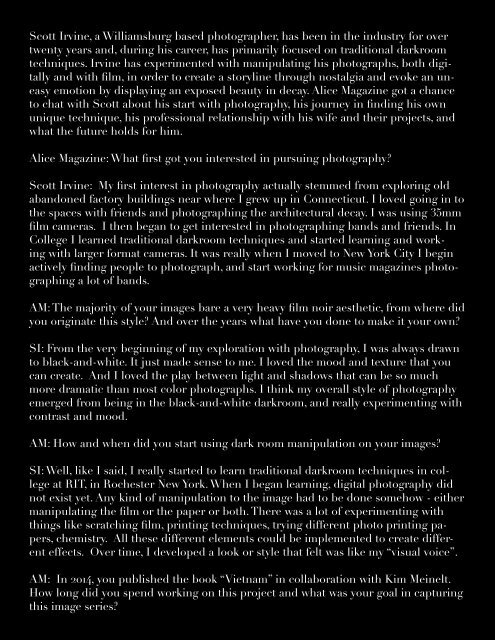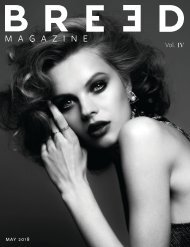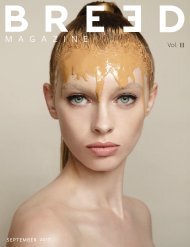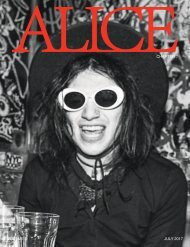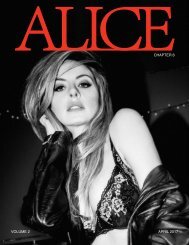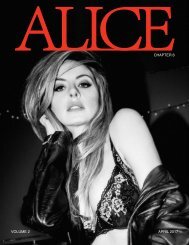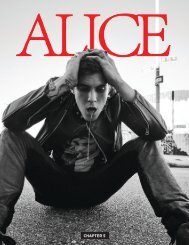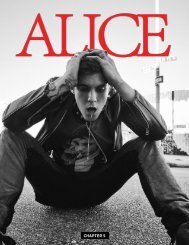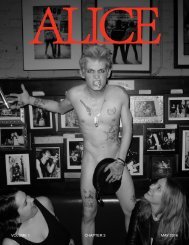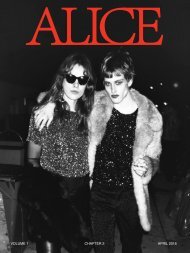Alice Magazine NYC - Chapter 3
Create successful ePaper yourself
Turn your PDF publications into a flip-book with our unique Google optimized e-Paper software.
Scott Irvine, a Williamsburg based photographer, has been in the industry for over<br />
twenty years and, during his career, has primarily focused on traditional darkroom<br />
techniques. Irvine has experimented with manipulating his photographs, both digitally<br />
and with film, in order to create a storyline through nostalgia and evoke an uneasy<br />
emotion by displaying an exposed beauty in decay. <strong>Alice</strong> <strong>Magazine</strong> got a chance<br />
to chat with Scott about his start with photography, his journey in finding his own<br />
unique technique, his professional relationship with his wife and their projects, and<br />
what the future holds for him.<br />
<strong>Alice</strong> <strong>Magazine</strong>: What first got you interested in pursuing photography?<br />
Scott Irvine: My first interest in photography actually stemmed from exploring old<br />
abandoned factory buildings near where I grew up in Connecticut. I loved going in to<br />
the spaces with friends and photographing the architectural decay. I was using 35mm<br />
film cameras. I then began to get interested in photographing bands and friends. In<br />
College I learned traditional darkroom techniques and started learning and working<br />
with larger format cameras. It was really when I moved to New York City I begin<br />
actively finding people to photograph, and start working for music magazines photographing<br />
a lot of bands.<br />
AM: The majority of your images bare a very heavy film noir aesthetic, from where did<br />
you originate this style? And over the years what have you done to make it your own?<br />
SI: From the very beginning of my exploration with photography, I was always drawn<br />
to black-and-white. It just made sense to me. I loved the mood and texture that you<br />
can create. And I loved the play between light and shadows that can be so much<br />
more dramatic than most color photographs. I think my overall style of photography<br />
emerged from being in the black-and-white darkroom, and really experimenting with<br />
contrast and mood.<br />
AM: How and when did you start using dark room manipulation on your images?<br />
SI: Well, like I said, I really started to learn traditional darkroom techniques in college<br />
at RIT, in Rochester New York. When I began learning, digital photography did<br />
not exist yet. Any kind of manipulation to the image had to be done somehow - either<br />
manipulating the film or the paper or both. There was a lot of experimenting with<br />
things like scratching film, printing techniques, trying different photo printing papers,<br />
chemistry. All these different elements could be implemented to create different<br />
effects. Over time, I developed a look or style that felt was like my “visual voice”.<br />
AM: In 2014, you published the book “Vietnam” in collaboration with Kim Meinelt.<br />
How long did you spend working on this project and what was your goal in capturing<br />
this image series?


